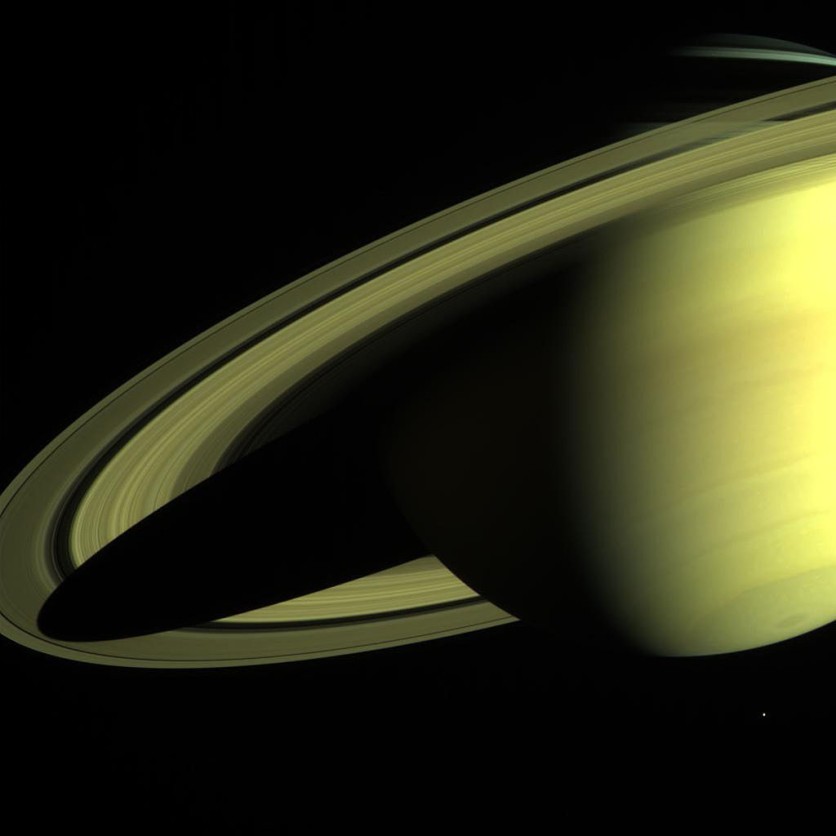Researchers discovered a major seasonal energy imbalance on Saturn, advancing our understanding of gas giant planets' weather and climate, as well as their long-term evolution.
University of Houston scientist Liming Li said this is the first time that a gas giant planet, like Saturn, exhibited "a seasonal global energy imbalance," according to a report from Science Alert. The expert noted that the event provided them a fresh insight "into the formation and evolution of planets" and a new perspective on "planetary and atmospheric science.
Planets in the Solar System gain energy from the sun's strong light but lose it as thermal radiation. Saturn and other gas giants have internal energy sources that impact their environment.
The University of Houston's atmospheric scientist, Xinyue Wang, evaluated data from the Cassini spacecraft on Saturn's brightness and concluded that Saturn's energy absorption and emission may fluctuate by up to 16%. These changes correspond to the planet's seasons and eccentric orbit, resulting in a nearly 20% variation in the Sun's distance.

New Saturn Findings May Change Theories
Saturn absorbs more radiation from the Sun while closer to it, creating a seasonal energy imbalance. In contrast, Earth's round orbit avoids such extremes.
Wang and her colleagues assume "a balanced global energy budget in current models and theories of the atmosphere, climate, and evolution of the gas giants" and believe that their discovery of Saturn's seasonal energy imbalance requires "reevaluation of those models and theories."
Saturn's energy imbalance may cause deep-atmosphere convective storms. Jupiter, another gas giant with a high eccentricity, may undergo similar events.
Moreover, Saturn's energy imbalance may reveal Earth's weather, which is less severe but still present. It may illuminate Neptune and Uranus' lesser-studied interior and outward workings.
Saturn's Unique Traits Aside From Its Rings
Saturn is the second-most massive planet in the solar system, with a mass 95 times that of Earth and a volume greater than 760 Earths, according to Space.com. It is made mostly up of hydrogen-helium gas and is the only planet less dense than water, despite its size and the least dense in the solar system.
Saturn has yellow, brown, and gray clouds that form faint stripes, jet streams, and storms.
The planet's equatorial upper atmosphere has 1,600-foot-per-second winds. The greatest hurricane-force winds on Earth reach 360 feet per second. Huge atmospheric pressure on Saturn compresses gas into liquid.
Saturn spins faster compared to Earth, taking only 10.5 hours to make a complete axis rotation. Due to its speed, the planet bulges at the equator and flattens at the poles.
Saturn's north pole has hexagonal jet streams are a unique feature of the sixth planet from the Sun. According to NASA, this pattern, first seen by Voyager I and subsequently investigated by Cassini, is about 20,000 miles (30,000 kilometers) broad. Studies found that it is an enormous spinning storm with a wavy jet stream and 200 mph winds that make up its structure, which cannot be seen in other places in the solar system.
Related Article : Astronomers Discover Massive Black Hole Feeding Frenzy in Distant Galaxy

ⓒ 2025 TECHTIMES.com All rights reserved. Do not reproduce without permission.




